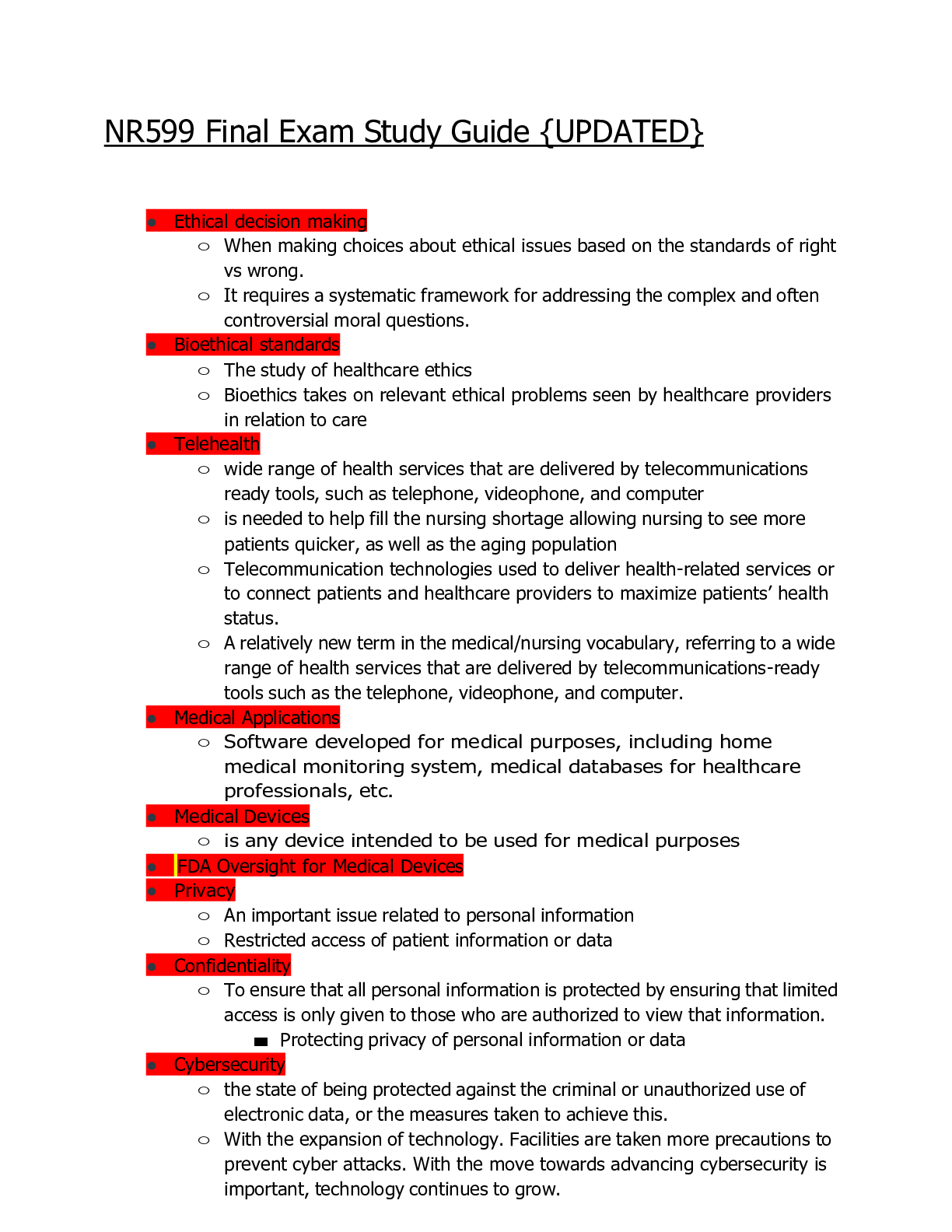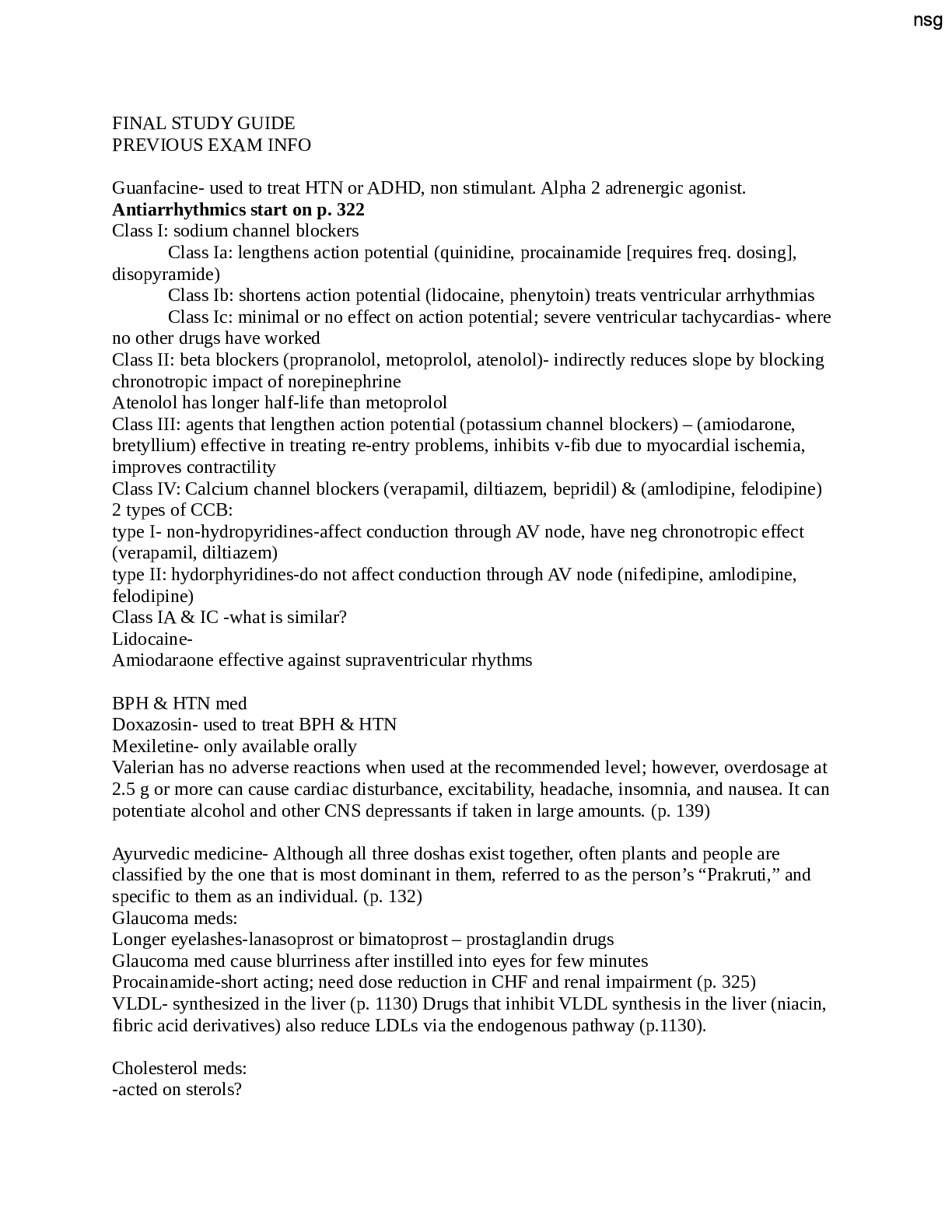*NURSING > STUDY GUIDE > NR 601 Final Study Guide (All)
NR 601 Final Study Guide
Document Content and Description Below
NR 601 Final Study Guide Week 5- Glucose Metabolism Disorders/Obesity Dunphy Chapter 58: Diabetes Mellitus p.909-938 Kennedy Chapter 14: Endocrine, Metabolic, and Nutritional Disorders p.... 369-376 o Obesity p.392-396 Glucose Metabolism Disorders Types of diabetes (prediabetes, type 1, and type 2) Prediabetes: fasting glucose consistently elevated above the normal range but less than 100-125. Impaired glucose tolerance (IGT) state of hyperglycemia where 2 hr post glucose load glycemic level is 140-199 Type 1: severe insulin deficiency resulting in reduction or absence of functioning beta cells in the pancreatic islets of Langerhans. This leads to hyperglycemia due to altered metabolism of lipids, carbs, and proteins. Initial s/s of hyperglycemia. Subjective findings- polyuria, polydipsia, nocturnal enuresis and polyphagia with paradoxical weight loss, visual changes and fatigue. Objective-dehydration (poor skin turgor and dry mucous), wt loss despite normal/increase appetite, reduction in muscle mass. DKA (fatigue, cramping, abnormal breathing, halitosis (rotten fruit + nail polish smell) o Long-stand DM: retinopathy (1. dilation of retinal venules and retinal capillary microaneurysms. 2. Increased vascular permeability. 3. Retinal ischemia due to vascular occlusion. 4. Angiogenesis – proliferation of new retinal surface blood vessels. 5. Retinal hemorrhage with fibrovascular proliferation and contraction, which may lead to retinal detachment All these findings should be referred to an ophthalmologist. Skin complications: chronic pyogenic infections or necrobiosis lipoidica diabeticorum (plaques with shiny yellow surface on anterior surfaces of legs or dorsal aspects of ankles) Paresthesia to distal extremities (foot ulcers, burns on hands from cooking) Gaze deviations in affected eyes from cranial nerve palsies Type 2: Type 2 DM is characterized by the abnormal secretion of insulin, resistance to the action of insulin in the target tissues, and/or an inadequate response at the level of the insulin receptor. A patient may, however, present with pruritus, fatigue, neuropathic complaints such as numbness and tingling, or blurred vision. [Show More]
Last updated: 1 year ago
Preview 1 out of 49 pages

Reviews( 0 )
Document information
Connected school, study & course
About the document
Uploaded On
Jul 13, 2021
Number of pages
49
Written in
Additional information
This document has been written for:
Uploaded
Jul 13, 2021
Downloads
0
Views
39

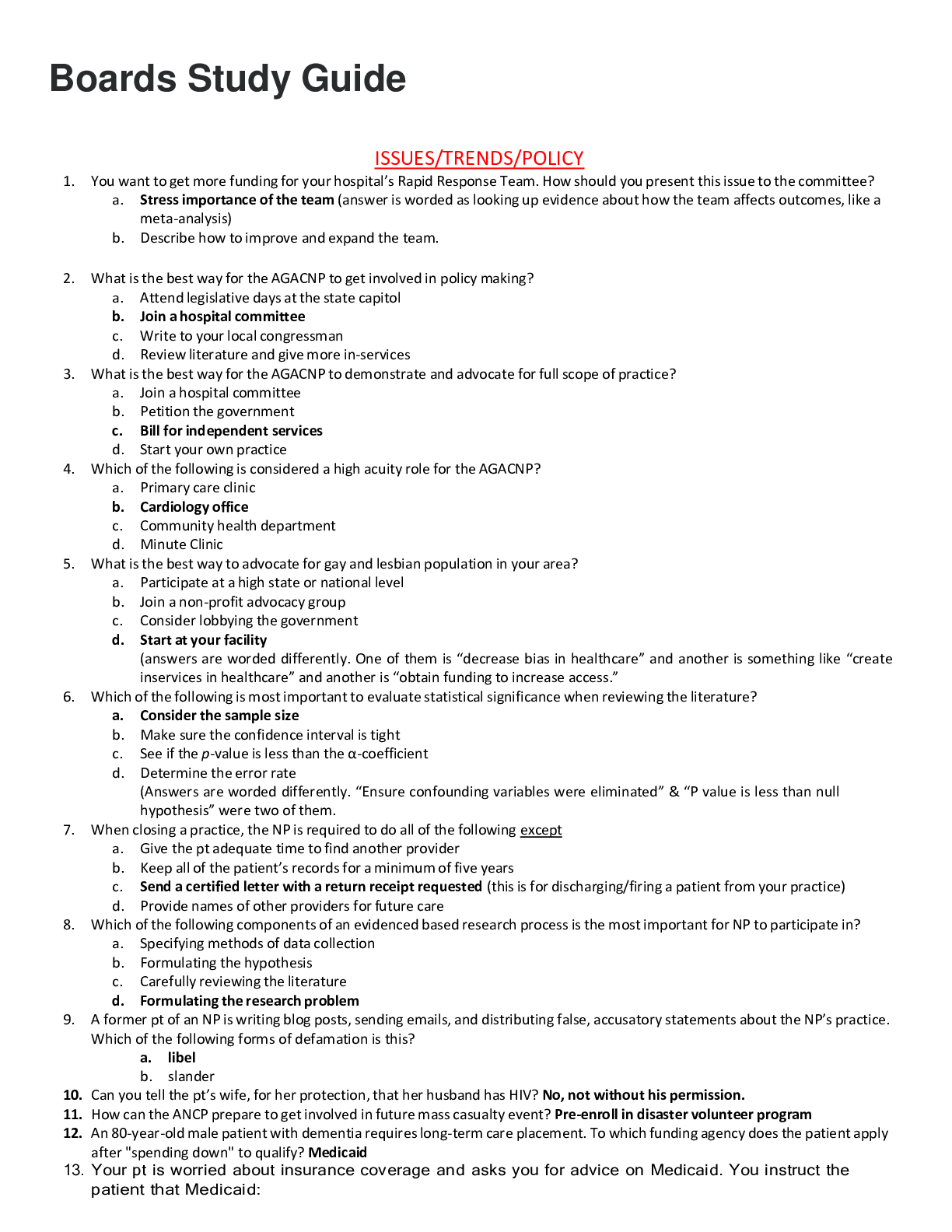



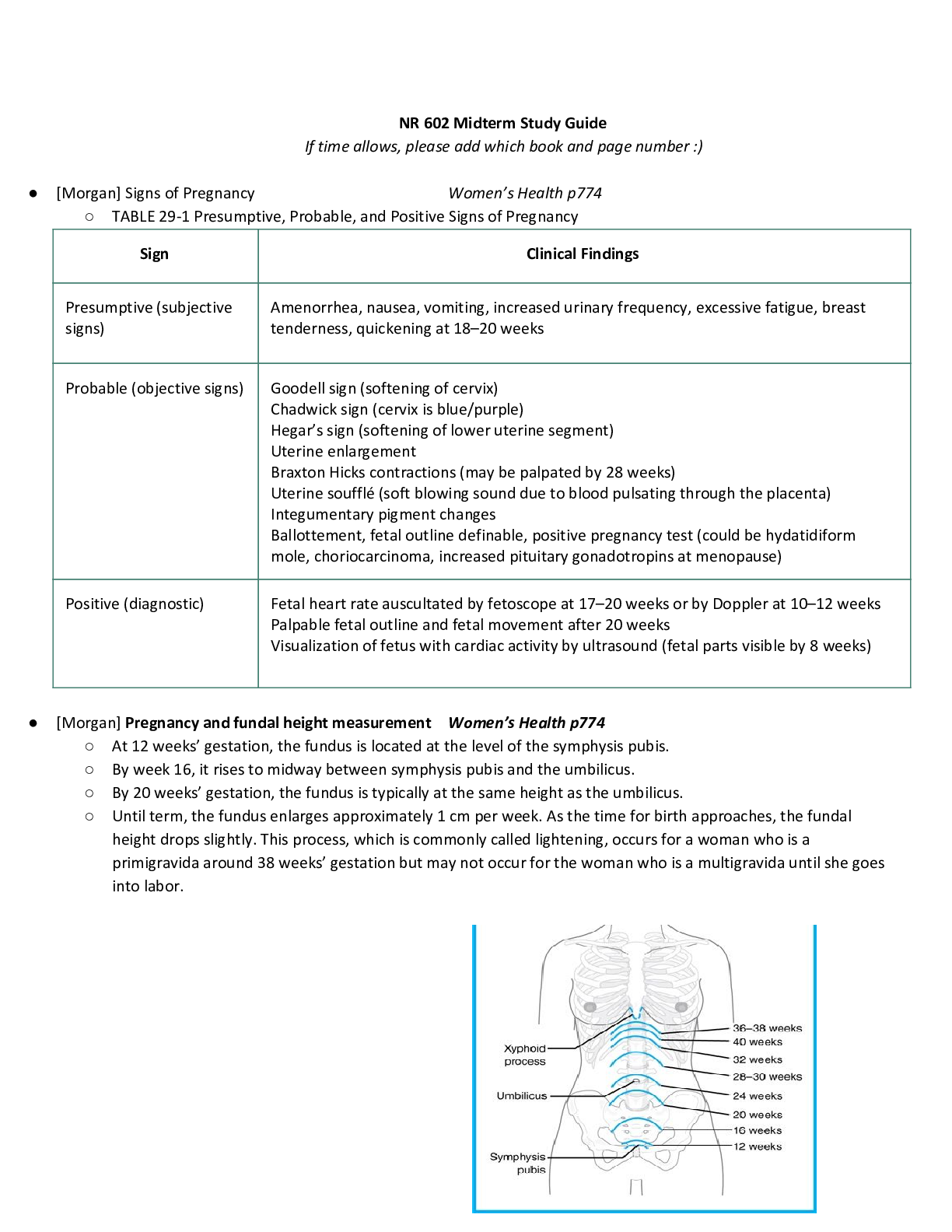
.png)
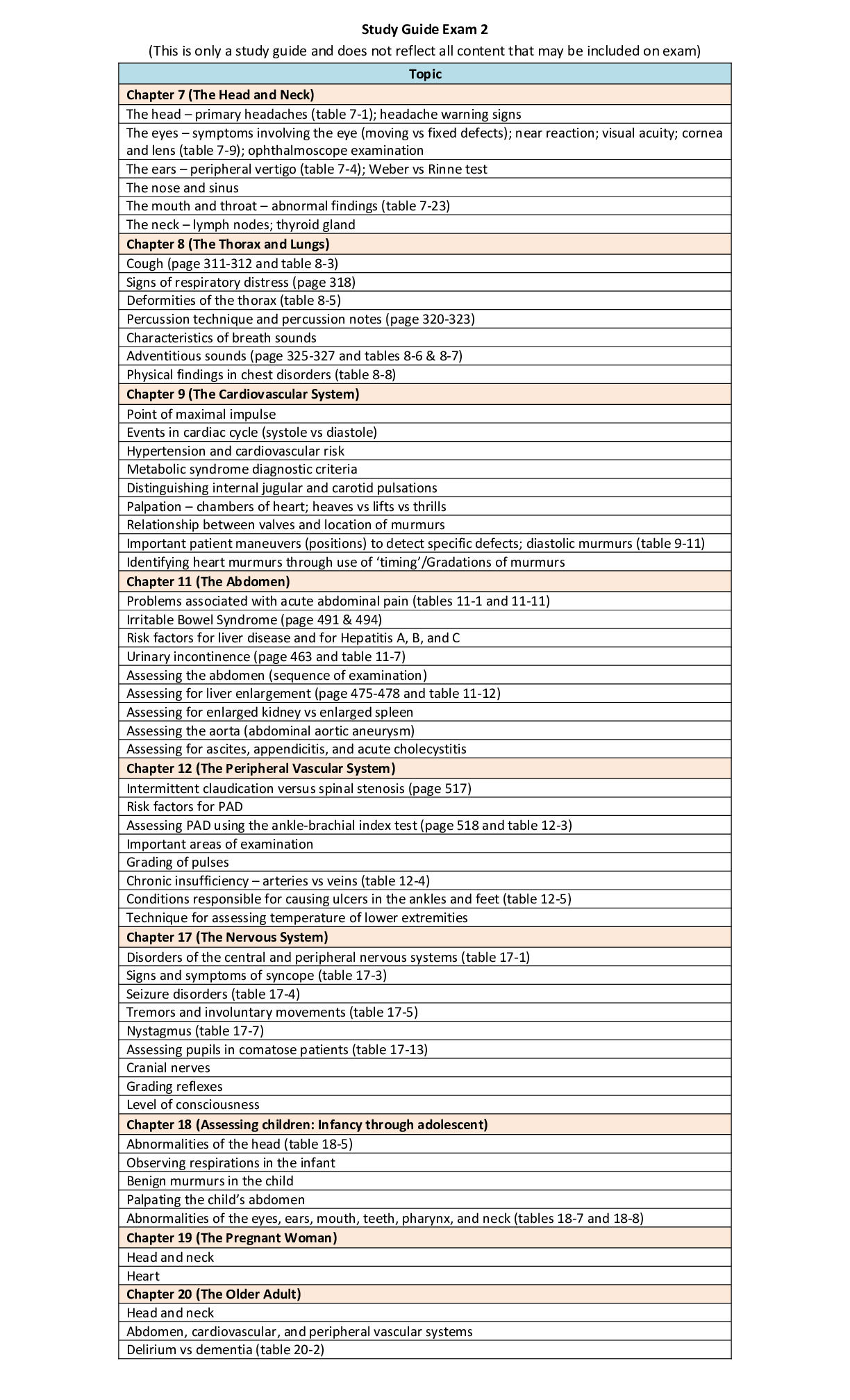
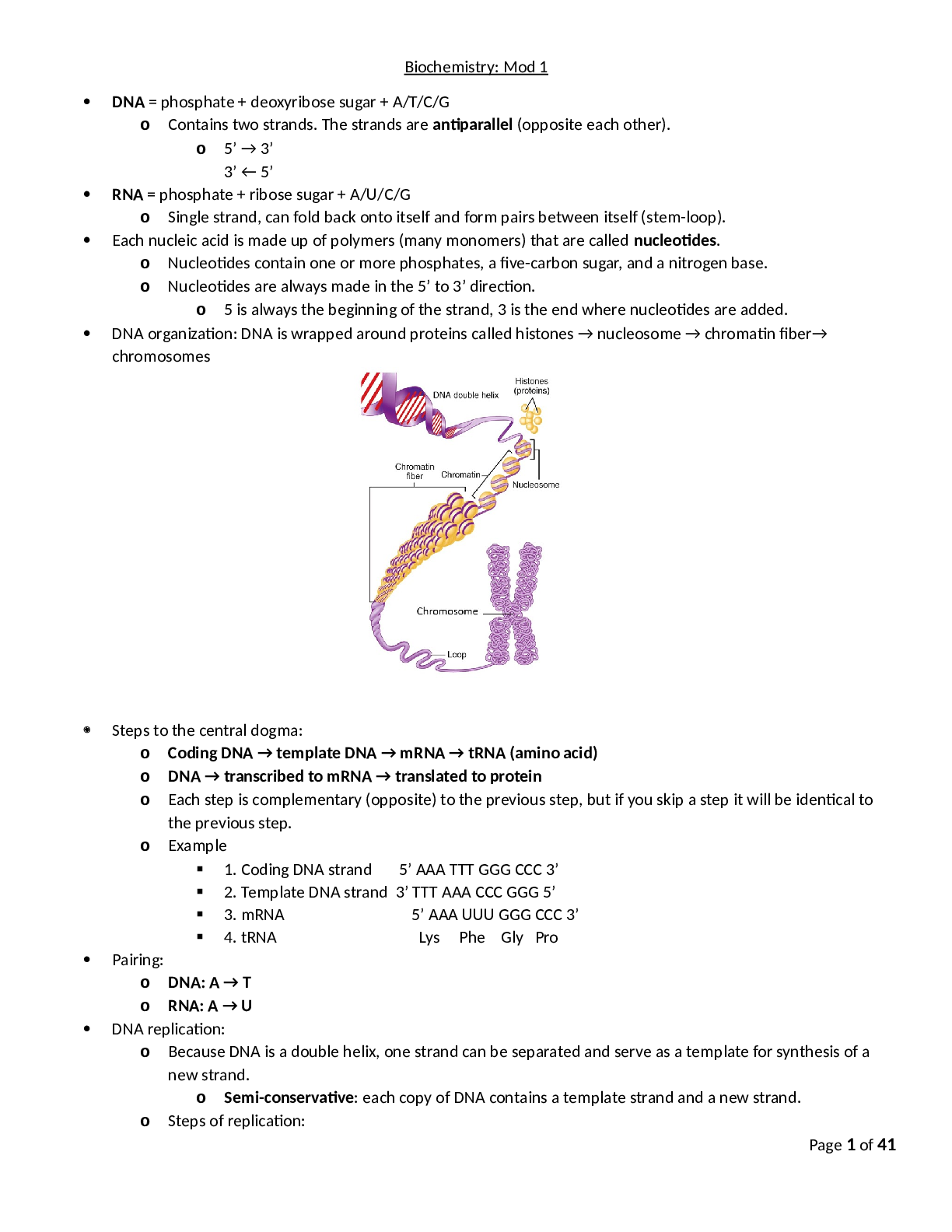

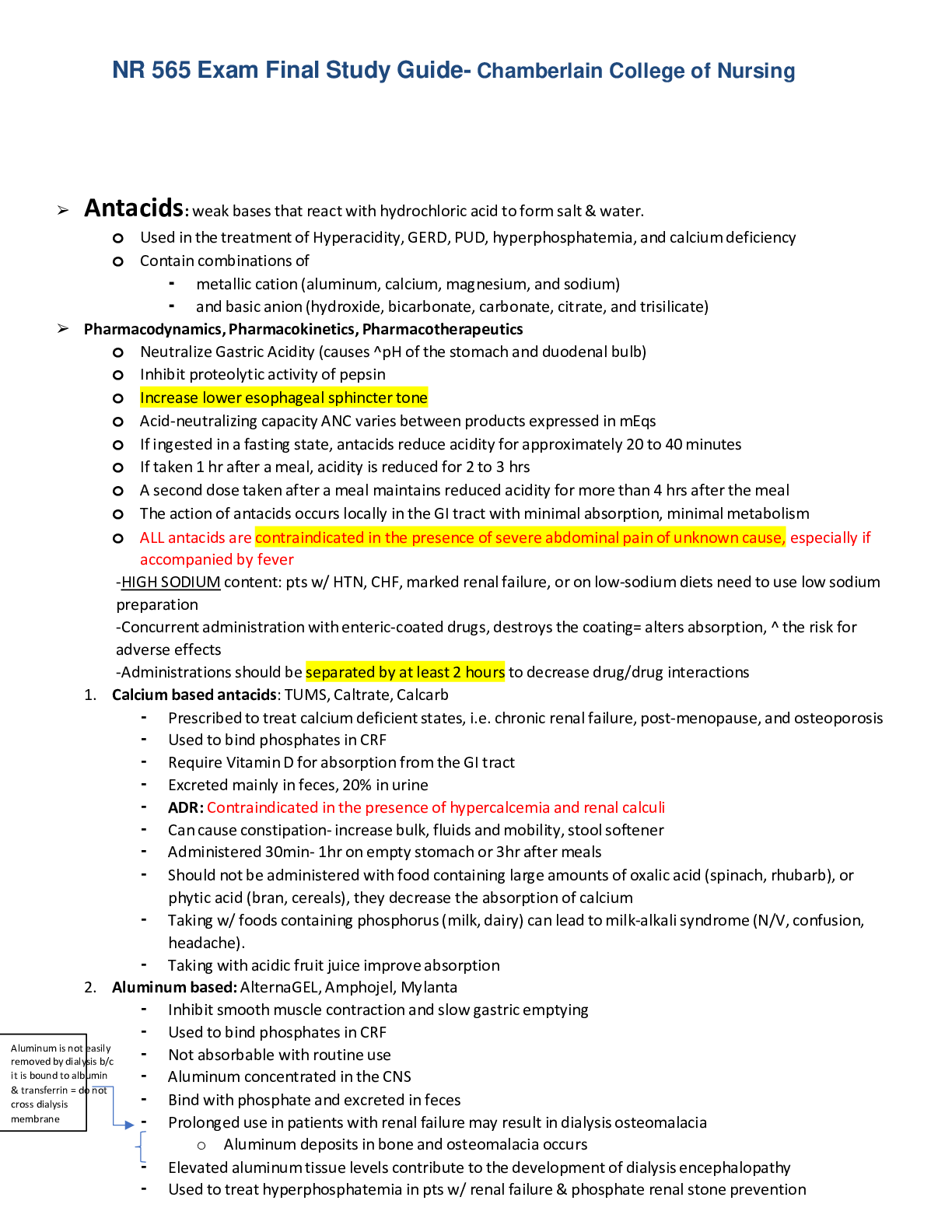


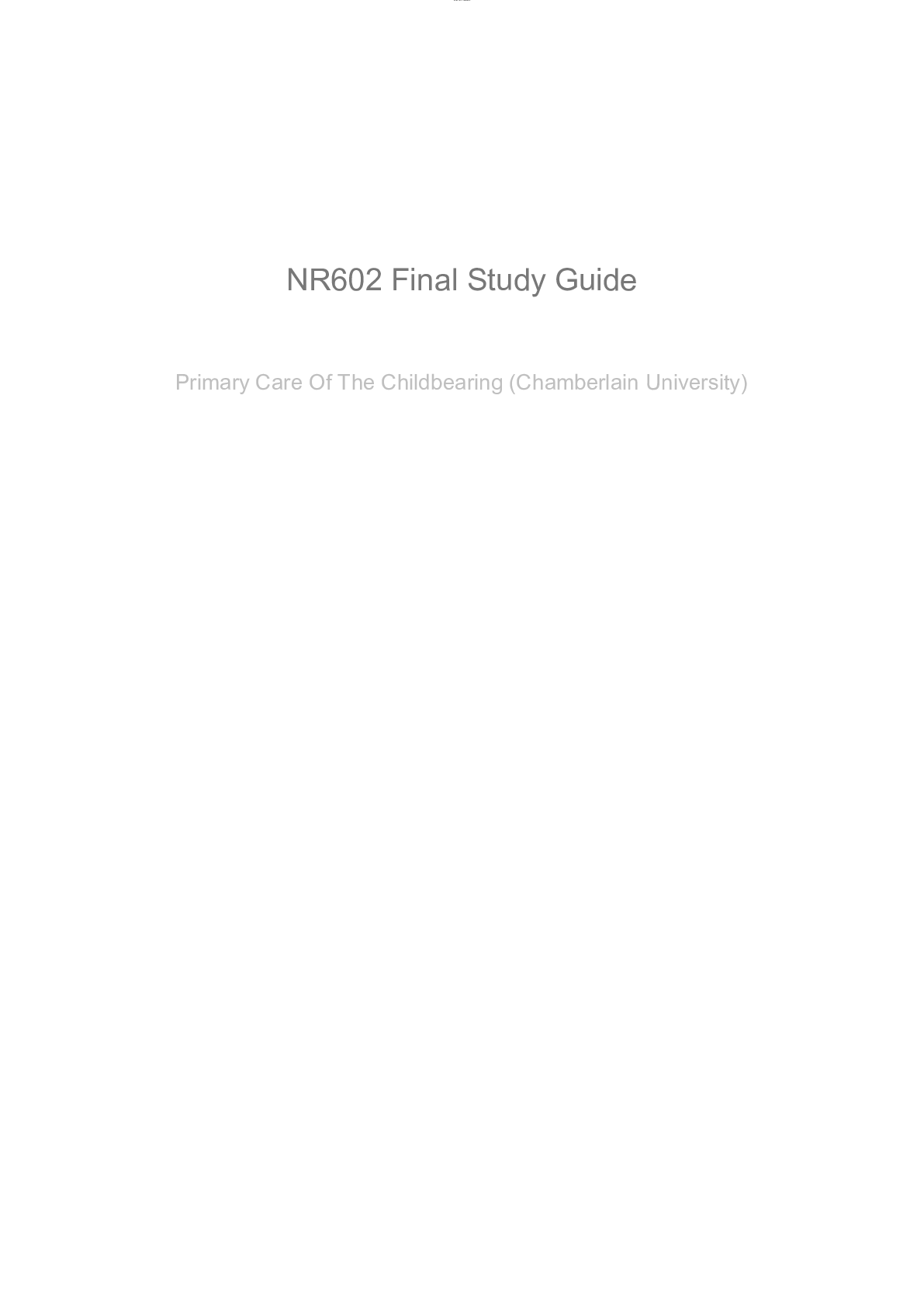
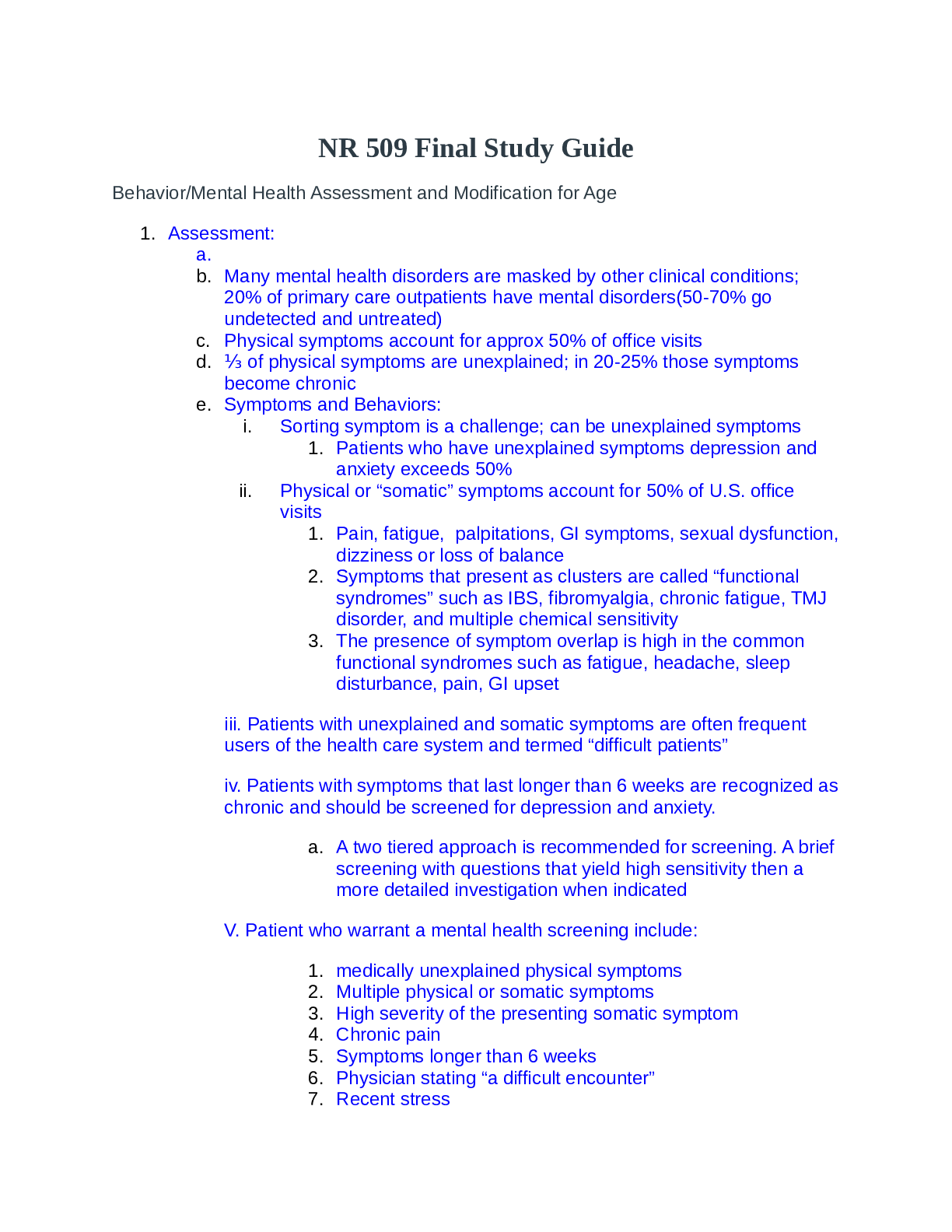





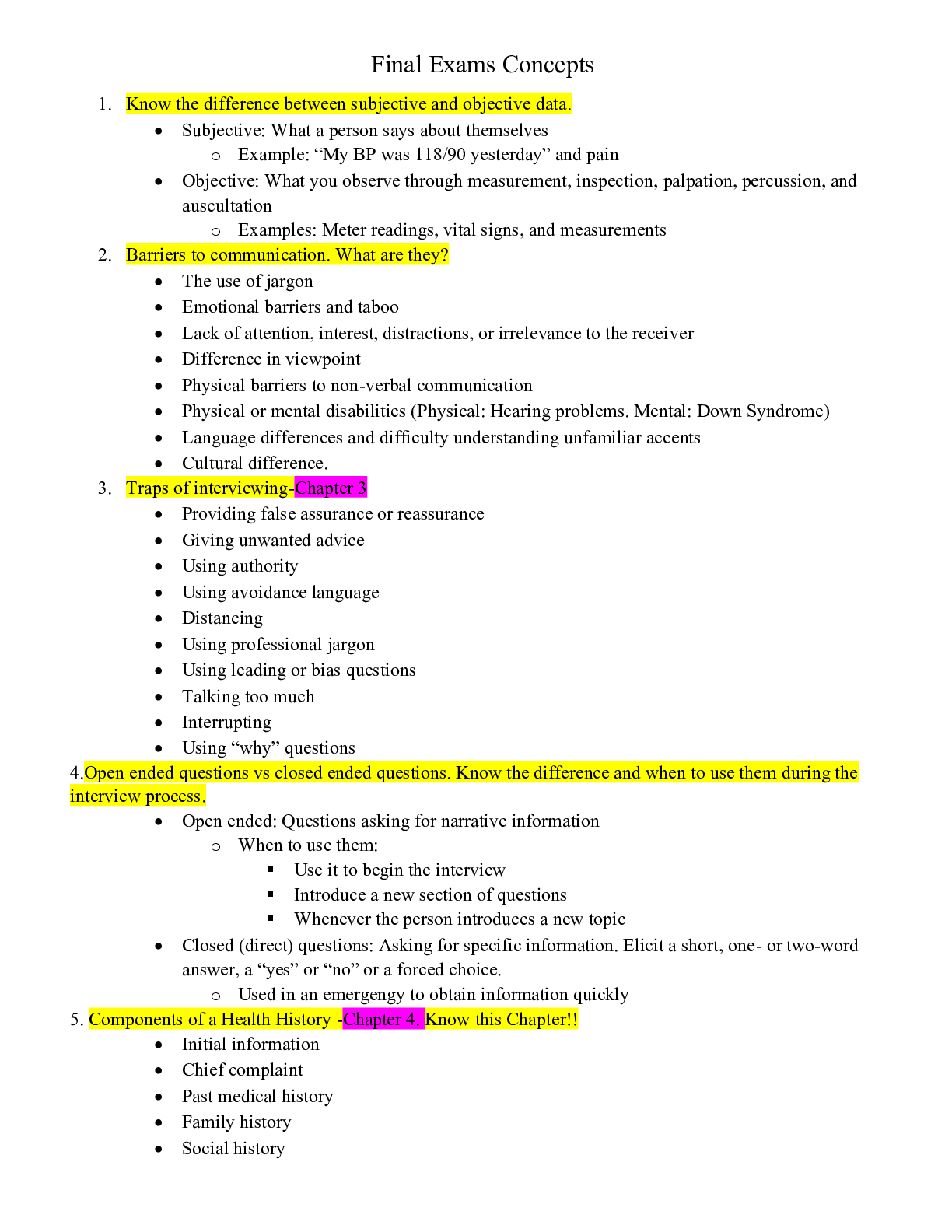
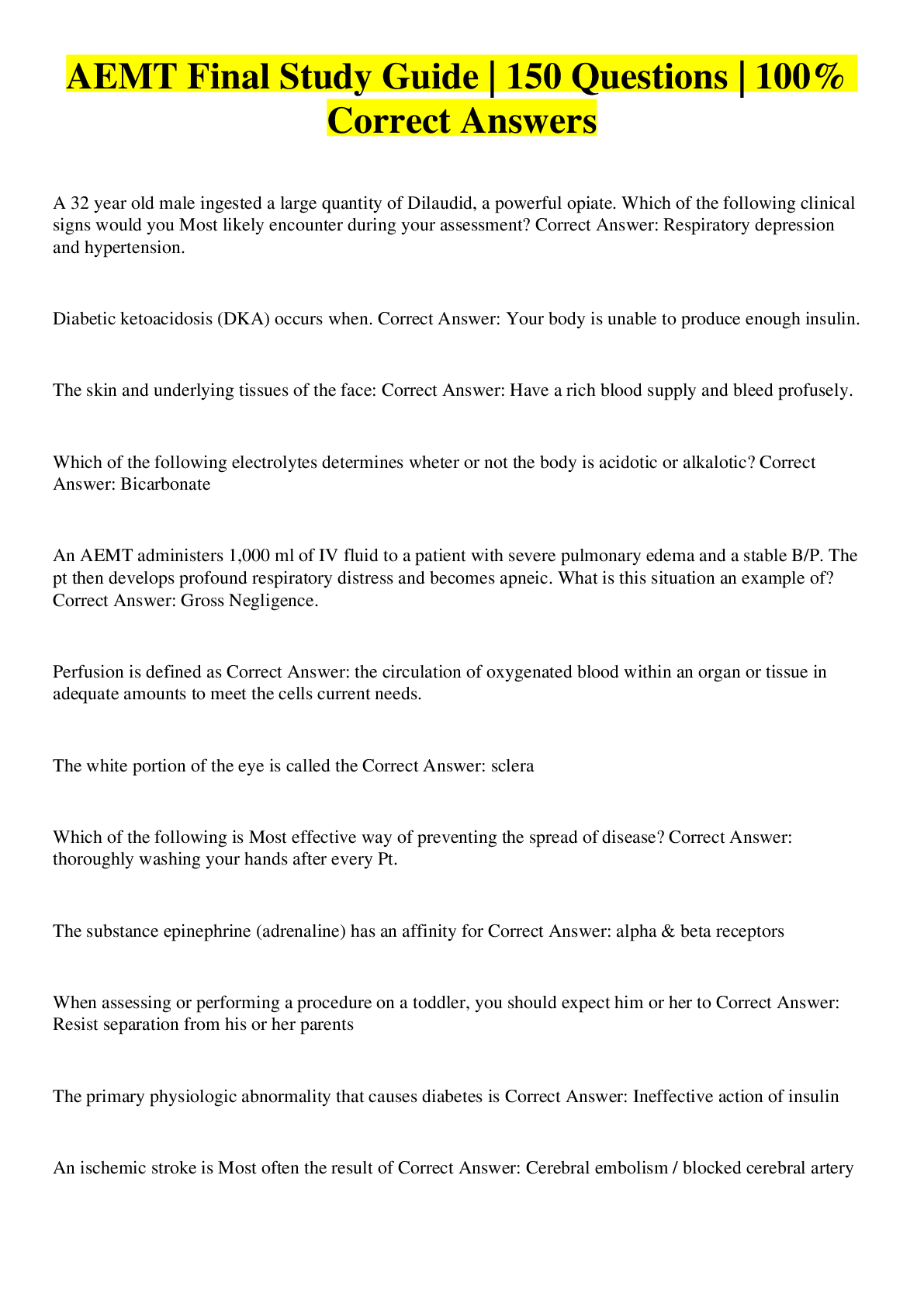


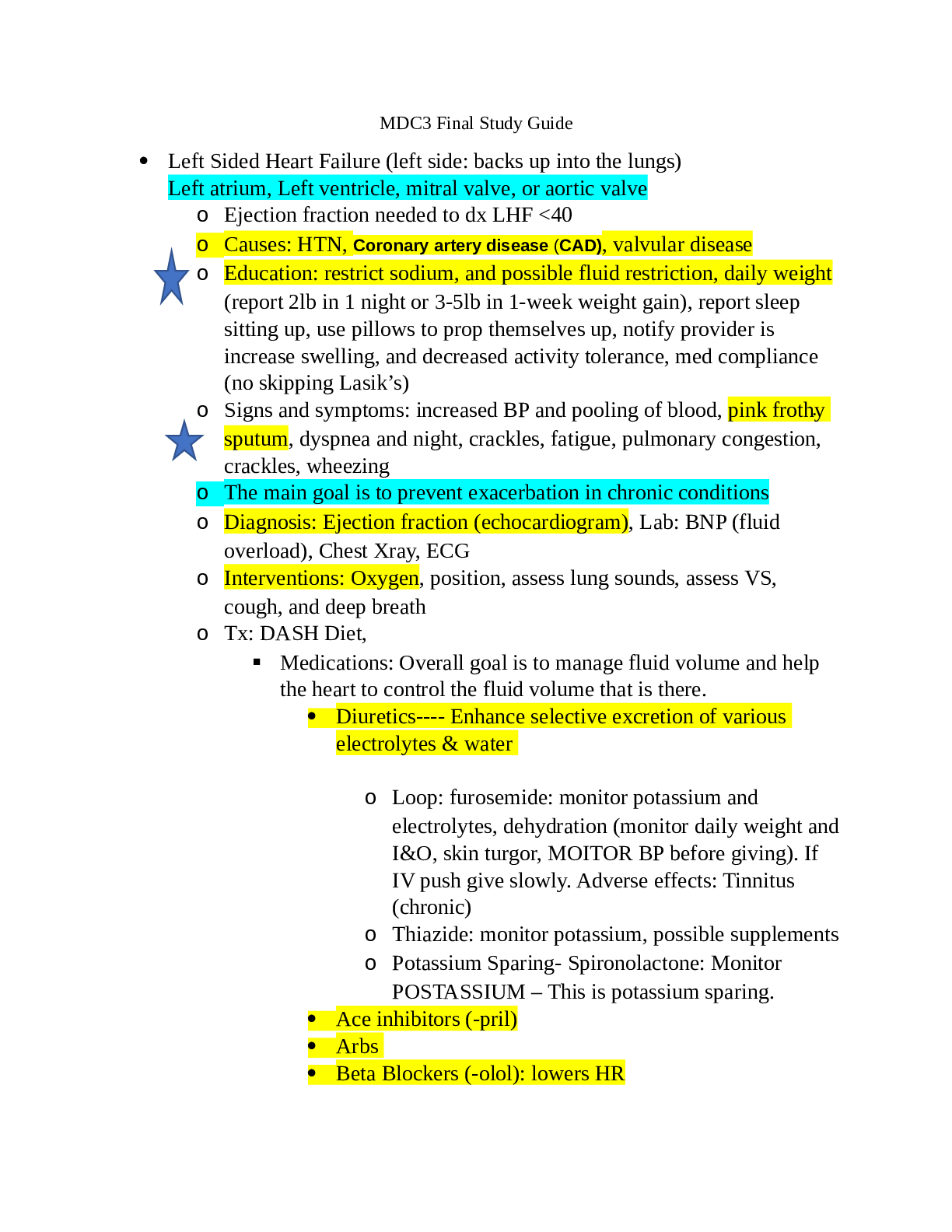
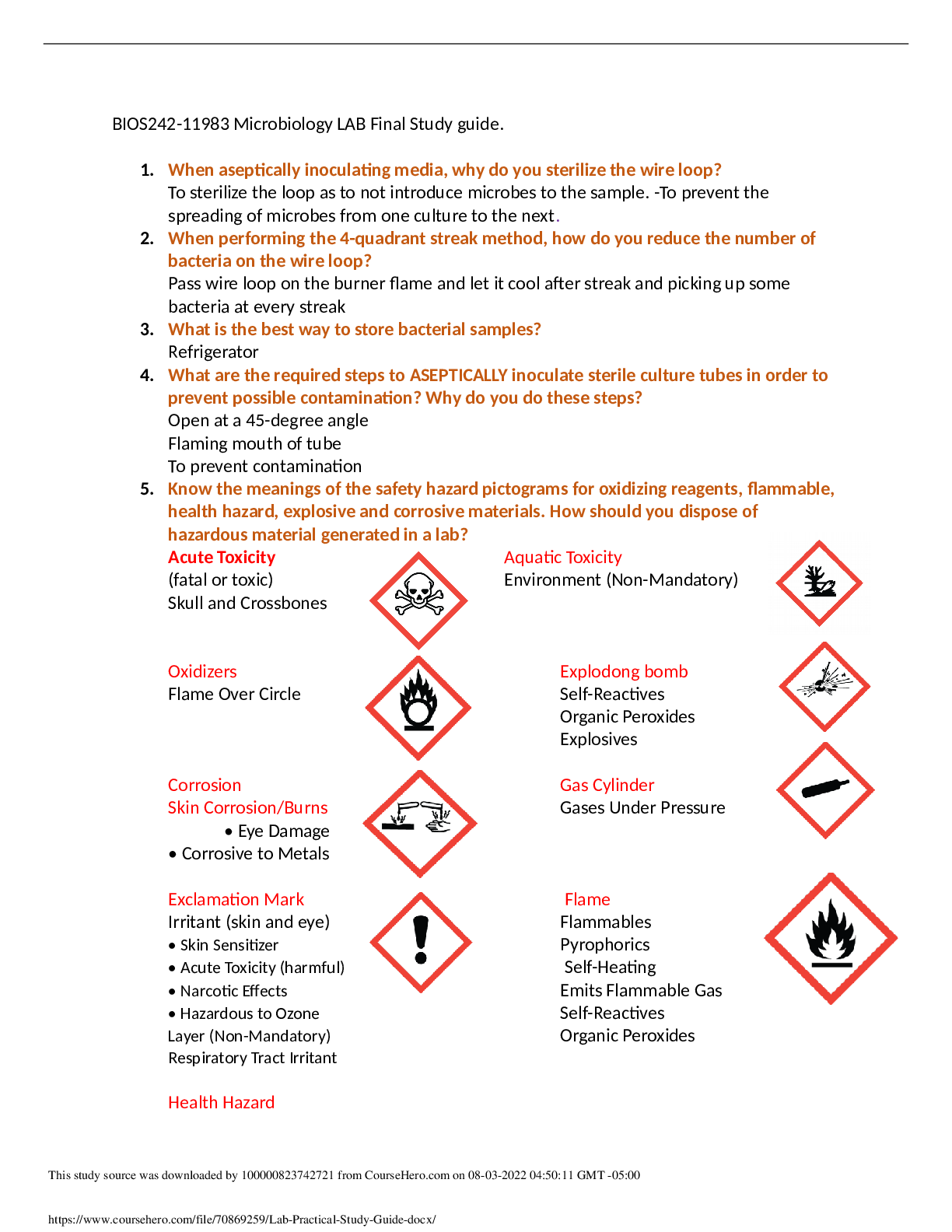

.png)
